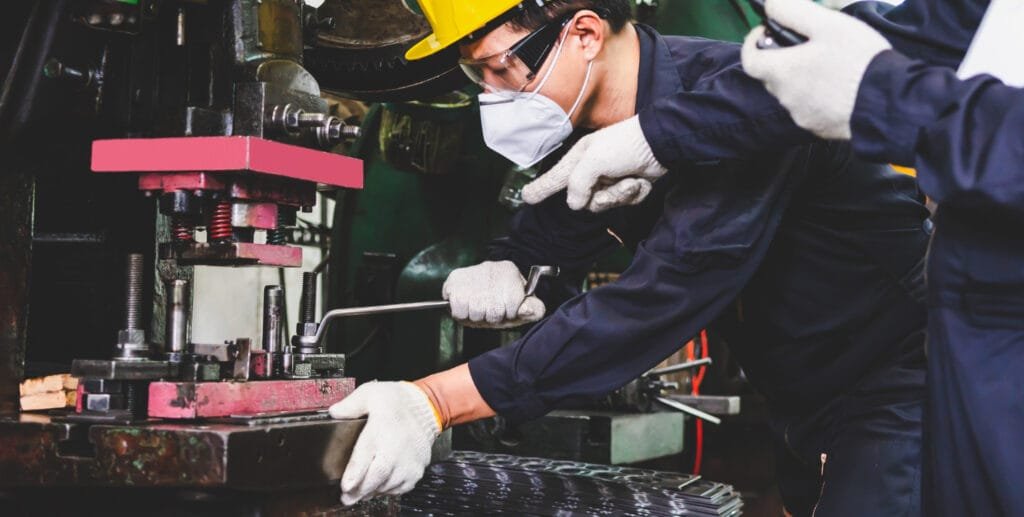Top 5 Industrial Maintenance Strategies You Need to Know
Industrial maintenance is a critical component of operational efficiency, safety, and productivity in any manufacturing or processing environment. The complexity and scale of modern industrial operations necessitate a comprehensive approach to maintenance, ensuring that equipment functions optimally and that downtime is minimized. This article delves into the top five industrial maintenance strategies that are essential for maintaining a smooth and efficient operation. Each strategy is discussed in detail, highlighting its importance, implementation, and benefits.
1. Preventive Maintenance
Overview of Preventive Maintenance
Preventive maintenance (PM) is a proactive approach to maintenance that involves regular, planned maintenance activities designed to prevent unexpected equipment failures and extend the life of machinery. The primary goal of PM is to identify and address potential issues before they lead to equipment breakdowns.
Key Components of Preventive Maintenance
Scheduled Inspections: Regular inspections of equipment and systems to detect wear and tear, misalignments, or other issues that could lead to failures.
Routine Servicing: Performing routine tasks such as lubrication, cleaning, and adjustments to keep equipment running smoothly.
Replacement of Worn Parts: Replacing components that are likely to fail before they do so, based on the manufacturer’s recommendations or historical data.
Documentation: Keeping detailed records of maintenance activities, including the date of service, work performed, and observations made during inspections.
Benefits of Preventive Maintenance
Reduced Downtime: By addressing potential problems before they cause failures, PM minimizes unplanned downtime and keeps production schedules on track.
Cost Savings: Regular maintenance can prevent costly emergency repairs and extend the lifespan of equipment, leading to significant cost savings over time.
Improved Safety: Well-maintained equipment is less likely to fail in a way that could cause accidents or injuries, enhancing overall workplace safety.
Enhanced Equipment Performance: Regular servicing ensures that machinery operates at peak efficiency, improving productivity and product quality.
Implementing Preventive Maintenance
Develop a Maintenance Schedule: Create a comprehensive schedule that outlines when and what maintenance tasks need to be performed for each piece of equipment.
Train Maintenance Staff: Ensure that maintenance personnel are adequately trained to perform preventive maintenance tasks and recognize early signs of potential issues.
Use Maintenance Software: Implement maintenance management software to track maintenance activities, schedule inspections, and keep records.
Monitor and Adjust: Continuously monitor the effectiveness of your PM program and make adjustments as necessary based on equipment performance and feedback from maintenance staff.
2. Predictive Maintenance
Overview of Predictive Maintenance
Predictive maintenance (PdM) leverages advanced technologies and data analysis to predict when equipment failures are likely to occur. By monitoring the condition of equipment in real-time, PdM allows maintenance to be performed only when necessary, reducing unnecessary maintenance activities and optimizing resource use.
Key Technologies in Predictive Maintenance
Condition Monitoring: Using sensors and other monitoring devices to continuously measure the condition of equipment, such as vibration, temperature, and pressure.
Data Analysis: Analyzing the data collected from condition monitoring devices to identify patterns and trends that indicate potential equipment failures.
Machine Learning: Employing machine learning algorithms to predict equipment failures based on historical data and real-time monitoring.
Remote Monitoring: Enabling maintenance teams to monitor equipment performance remotely, allowing for quick intervention when issues are detected.
Benefits of Predictive Maintenance
Increased Equipment Uptime: By predicting failures before they occur, PdM reduces unplanned downtime and ensures that equipment is available when needed.
Cost Efficiency: PdM optimizes maintenance activities, reducing the frequency of unnecessary maintenance and lowering overall maintenance costs.
Extended Equipment Life: Addressing issues before they cause significant damage can extend the lifespan of equipment.
Improved Safety: Early detection of potential failures reduces the risk of catastrophic equipment failures that could endanger workers.
Implementing Predictive Maintenance
Invest in Technology: Acquire the necessary condition monitoring devices and data analysis tools to support your PdM program.
Collect and Analyze Data: Gather data from your equipment and use advanced analytics to identify patterns and predict failures.
Integrate with Maintenance Management Systems: Ensure that your PdM system is integrated with your maintenance management software for seamless tracking and scheduling.
Train Staff: Provide training for maintenance personnel on the use of predictive maintenance technologies and data interpretation.
3. Reliability-Centered Maintenance
Overview of Reliability-Centered Maintenance
Reliability-centered maintenance (RCM) is a systematic approach to maintenance that focuses on ensuring that systems and equipment function reliably and efficiently. RCM involves analyzing the functions and potential failures of equipment to determine the most effective maintenance strategies.
Key Components of Reliability-Centered Maintenance
Functional Analysis: Identifying the primary functions of equipment and the potential consequences of failure.
Failure Modes and Effects Analysis (FMEA): Analyzing the various ways in which equipment can fail and the potential impacts of these failures.
Maintenance Strategy Selection: Determining the most appropriate maintenance strategy for each failure mode, such as preventive maintenance, predictive maintenance, or run-to-failure.
Implementation and Review: Implementing the chosen maintenance strategies and continuously reviewing their effectiveness.
Benefits of Reliability-Centered Maintenance
Optimized Maintenance Efforts: RCM ensures that maintenance resources are focused on the most critical equipment and failure modes, maximizing efficiency.
Improved Equipment Reliability: By addressing the most significant failure modes, RCM enhances the overall reliability of equipment and systems.
Cost Savings: RCM reduces unnecessary maintenance activities and focuses on preventing the most impactful failures, leading to cost savings.
Enhanced Safety: RCM prioritizes the maintenance of equipment that has the greatest potential to impact safety, reducing the risk of accidents.
Implementing Reliability-Centered Maintenance
Conduct Functional Analysis: Identify the critical functions of your equipment and the potential consequences of failure.
Perform FMEA: Analyze the different ways in which your equipment can fail and the impacts of these failures.
Select Maintenance Strategies: Choose the most effective maintenance strategies for each failure mode based on the results of your FMEA.
Implement and Monitor: Implement the chosen strategies and continuously monitor their effectiveness, making adjustments as needed.
4. Total Productive Maintenance
Overview of Total Productive Maintenance
Total productive maintenance (TPM) is a holistic approach to maintenance that involves all employees in the maintenance process. TPM aims to maximize equipment effectiveness by fostering a culture of continuous improvement and proactive maintenance.
Key Pillars of Total Productive Maintenance
Autonomous Maintenance: Empowering operators to perform basic maintenance tasks and inspections, fostering a sense of ownership and responsibility.
Planned Maintenance: Scheduling regular maintenance activities to prevent equipment failures and extend equipment life.
Focused Improvement: Encouraging continuous improvement initiatives to enhance equipment performance and reduce downtime.
Training and Education: Providing training for all employees on maintenance best practices and the importance of proactive maintenance.
Benefits of Total Productive Maintenance
Increased Equipment Uptime: TPM reduces unplanned downtime by involving all employees in proactive maintenance activities.
Improved Employee Engagement: Involving employees in maintenance fosters a sense of ownership and responsibility, leading to higher engagement and job satisfaction.
Enhanced Equipment Performance: Continuous improvement initiatives and proactive maintenance enhance equipment performance and efficiency.
Cost Savings: TPM reduces the frequency of equipment failures and extends equipment life, leading to cost savings.
Implementing Total Productive Maintenance
Engage Employees: Involve all employees in the maintenance process and provide training on maintenance best practices.
Develop a Maintenance Schedule: Create a comprehensive schedule for planned maintenance activities.
Encourage Continuous Improvement: Foster a culture of continuous improvement by encouraging employees to identify and implement improvement initiatives.
Monitor and Adjust: Continuously monitor the effectiveness of your TPM program and make adjustments as needed.
5. Corrective Maintenance
Overview of Corrective Maintenance
Corrective maintenance (CM) is a reactive approach to maintenance that involves repairing or replacing equipment after a failure has occurred. While preventive and predictive maintenance aim to prevent failures, CM focuses on quickly addressing failures when they do occur to minimize downtime.
Key Components of Corrective Maintenance
Failure Detection: Identifying equipment failures through regular inspections, monitoring, or reports from operators.
Root Cause Analysis: Determining the underlying cause of the failure to prevent recurrence.
Repair or Replacement: Performing the necessary repairs or replacing failed components to restore equipment functionality.
Documentation: Keeping detailed records of failures, repairs, and the findings from root cause analysis.
Benefits of Corrective Maintenance
Quick Response to Failures: CM focuses on quickly addressing equipment failures to minimize downtime and restore production.
Cost Efficiency: CM can be cost-effective for non-critical equipment where the cost of preventive maintenance may not be justified.
Flexibility: CM allows for flexibility in addressing unexpected failures as they occur.
Implementing Corrective Maintenance
Establish Response Procedures: Develop procedures for quickly detecting and responding to equipment failures.
Perform Root Cause Analysis: Conduct root cause analysis for each failure to identify underlying issues and prevent recurrence.
Maintain Spare Parts Inventory: Keep an inventory of critical spare parts to facilitate quick repairs.
Document and Analyze: Document all failures and repairs, and analyze the data to identify patterns and potential improvements.
Integrating Maintenance Strategies
While each of the maintenance strategies discussed has its own merits, the most effective maintenance programs often integrate multiple strategies to create a comprehensive approach. Combining preventive, predictive, and reliability-centered maintenance with elements of total productive maintenance and corrective maintenance can provide a balanced and effective maintenance program.
Developing an Integrated Maintenance Plan
Assess Equipment Criticality: Identify which equipment is most critical to your operations and prioritize maintenance efforts accordingly.
Combine Strategies: Use preventive and predictive maintenance for critical equipment, while employing corrective maintenance for less critical equipment.
Involve Employees: Engage all employees in the maintenance process through TPM initiatives.
Continuously Improve: Foster a culture of continuous improvement and regularly review and adjust your maintenance strategies based on performance data and feedback.
Benefits of an Integrated Approach
Comprehensive Coverage: An integrated approach ensures that all equipment is maintained appropriately based on its criticality and
failure modes.
Enhanced Efficiency: Combining strategies optimizes maintenance efforts and resource allocation.
Improved Reliability and Performance: A comprehensive maintenance program enhances equipment reliability, performance, and overall operational efficiency.
Cost Savings: An integrated approach reduces unnecessary maintenance activities and extends equipment life, leading to cost savings.
Conclusion
Industrial maintenance is a multifaceted discipline that requires a strategic approach to ensure optimal equipment performance and operational efficiency. By understanding and implementing the top five maintenance strategies—preventive maintenance, predictive maintenance, reliability-centered maintenance, total productive maintenance, and corrective maintenance—organizations can develop a robust maintenance program that minimizes downtime, reduces costs, and enhances safety and productivity.
Integrating these strategies into a comprehensive maintenance plan and continuously improving maintenance practices based on data and feedback will ensure that industrial operations remain efficient, reliable, and competitive in an increasingly complex and demanding environment.




